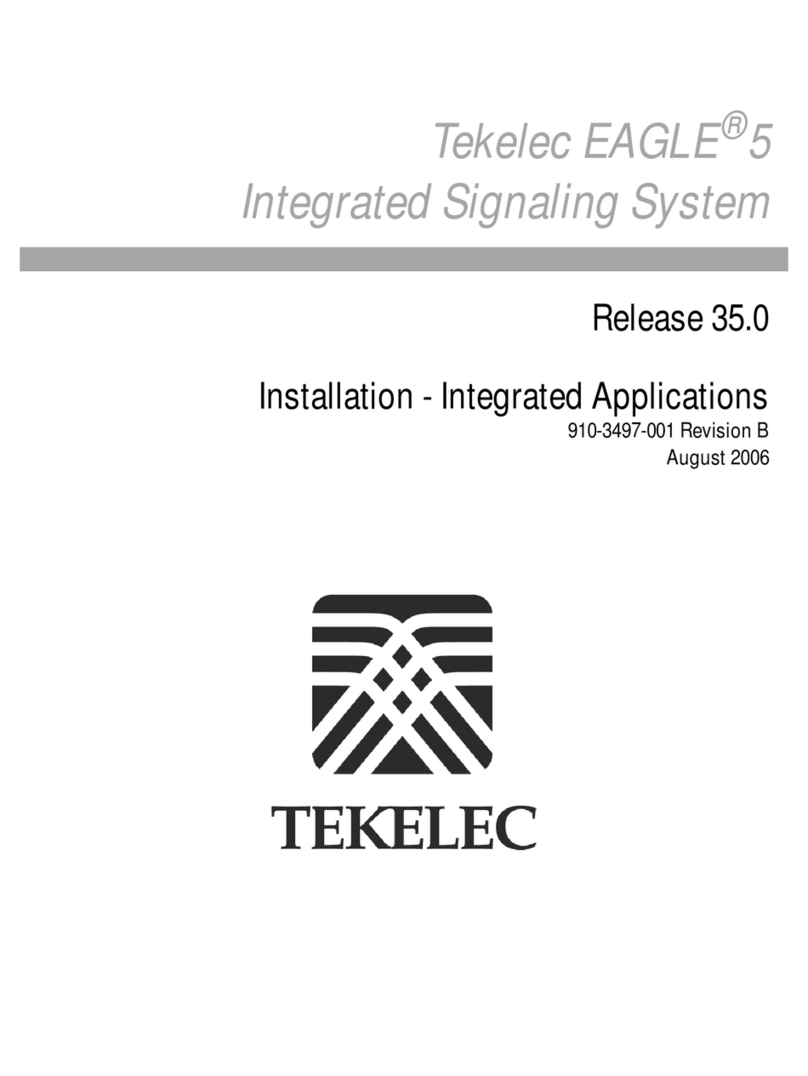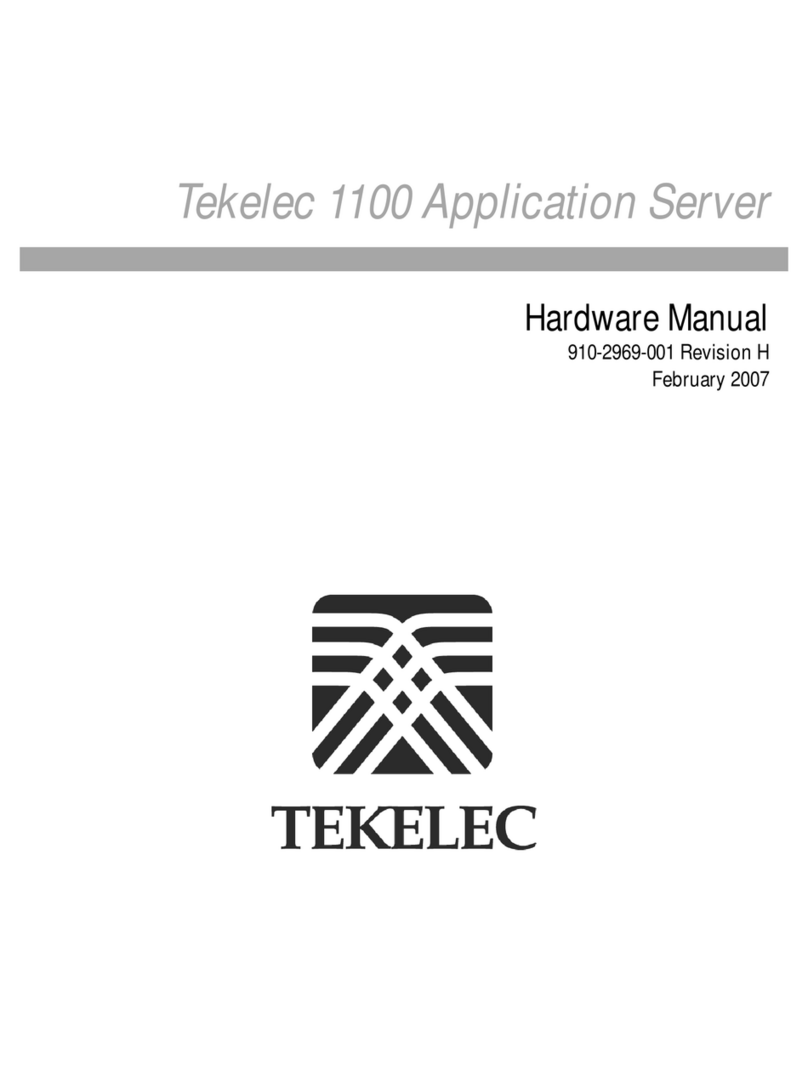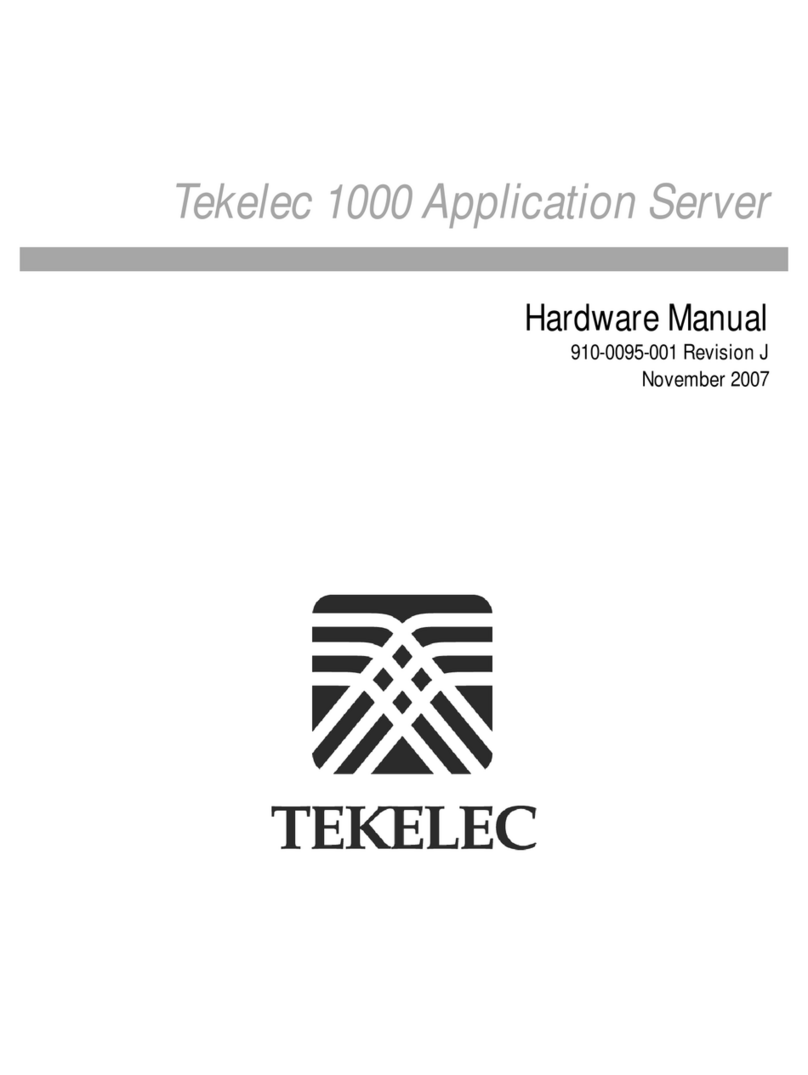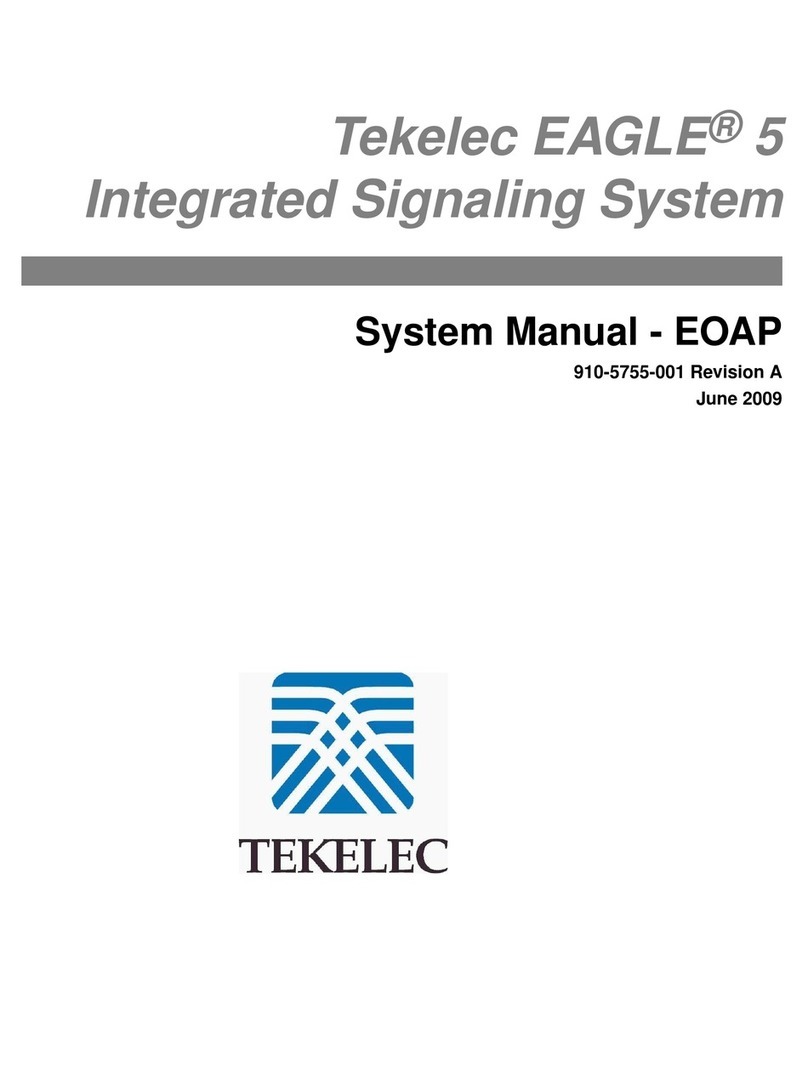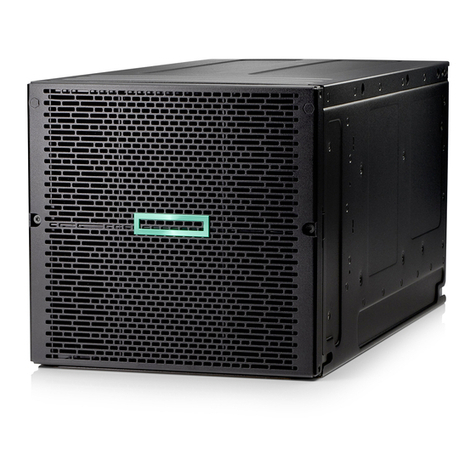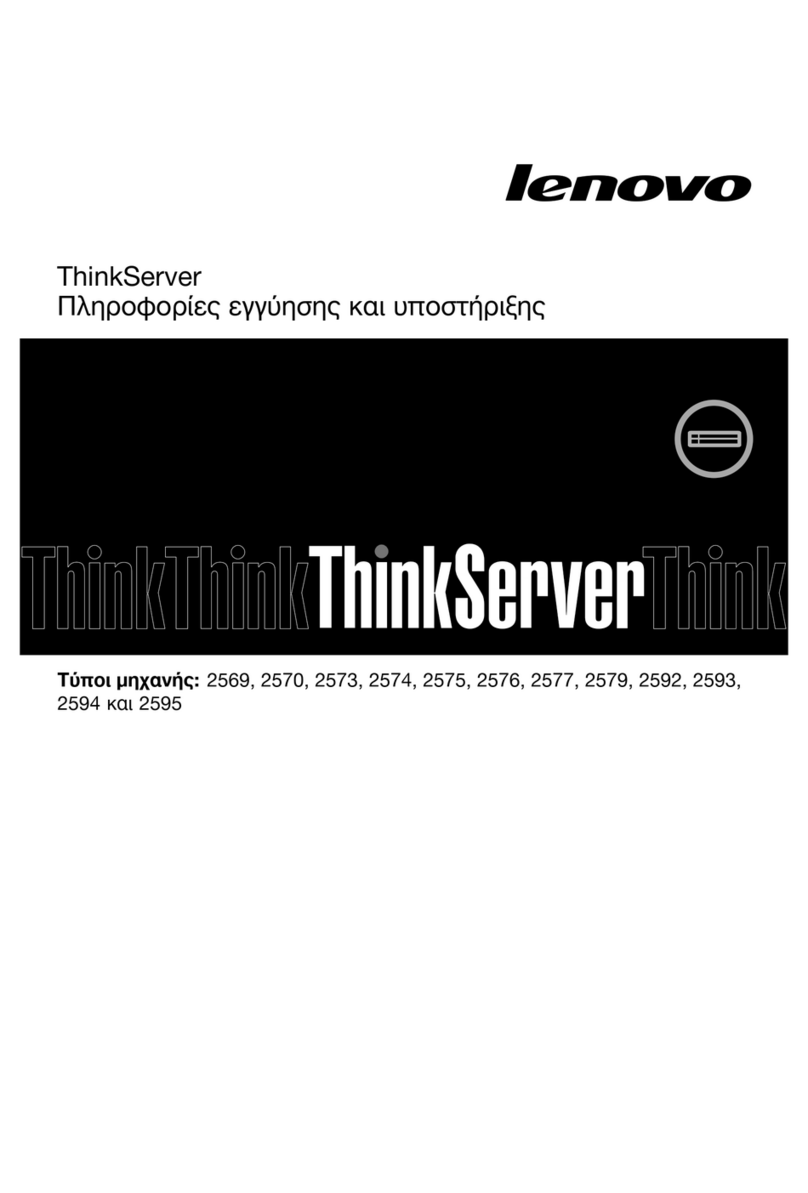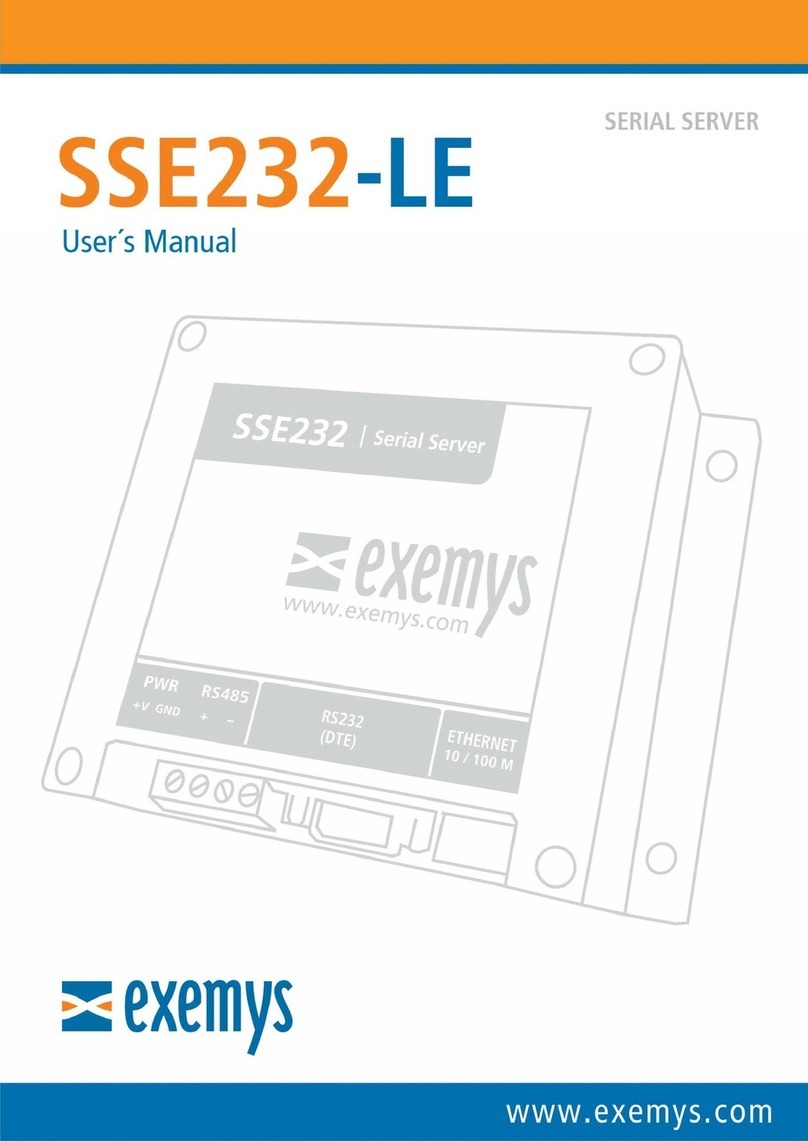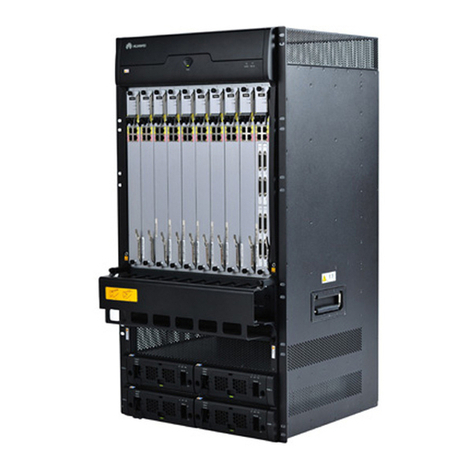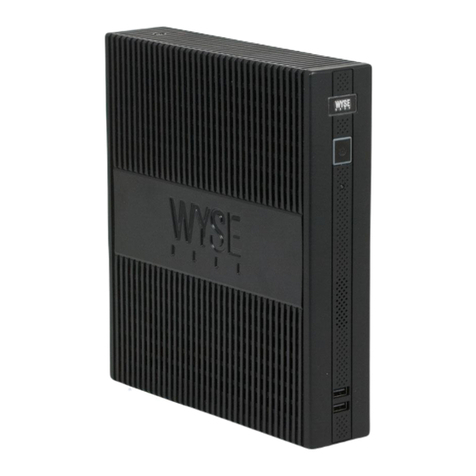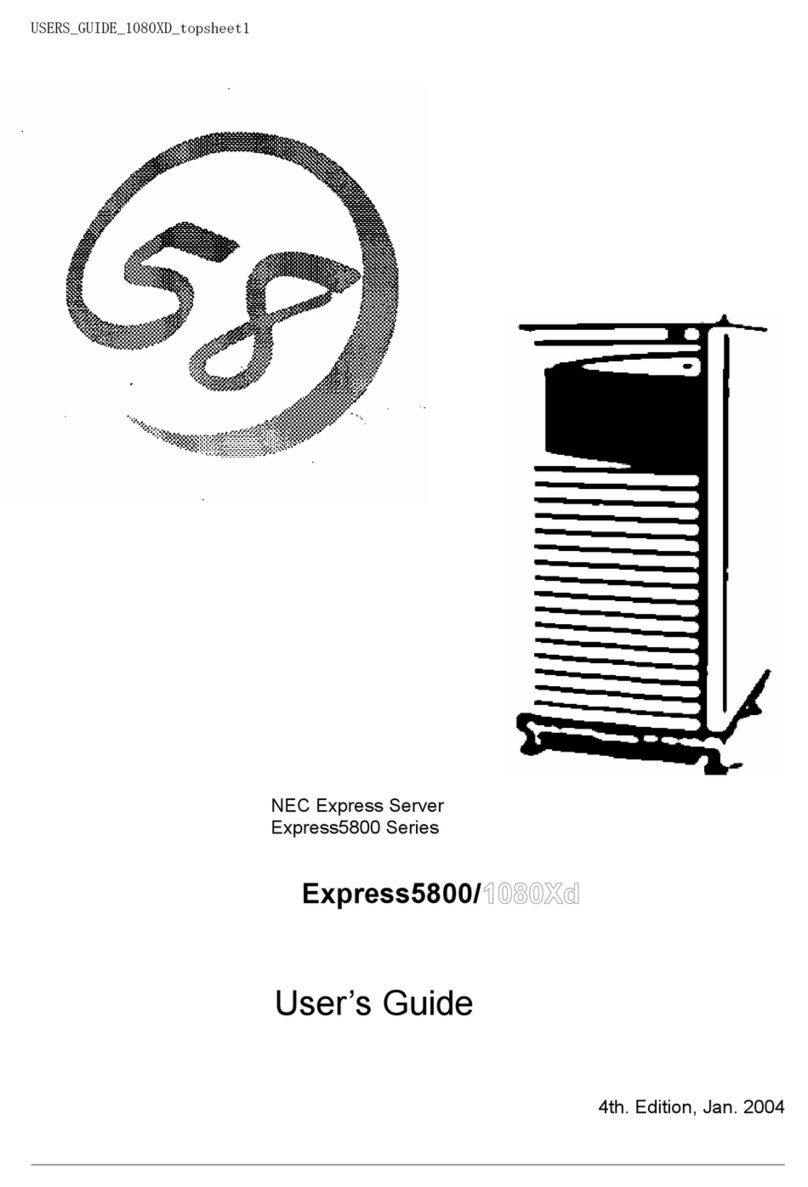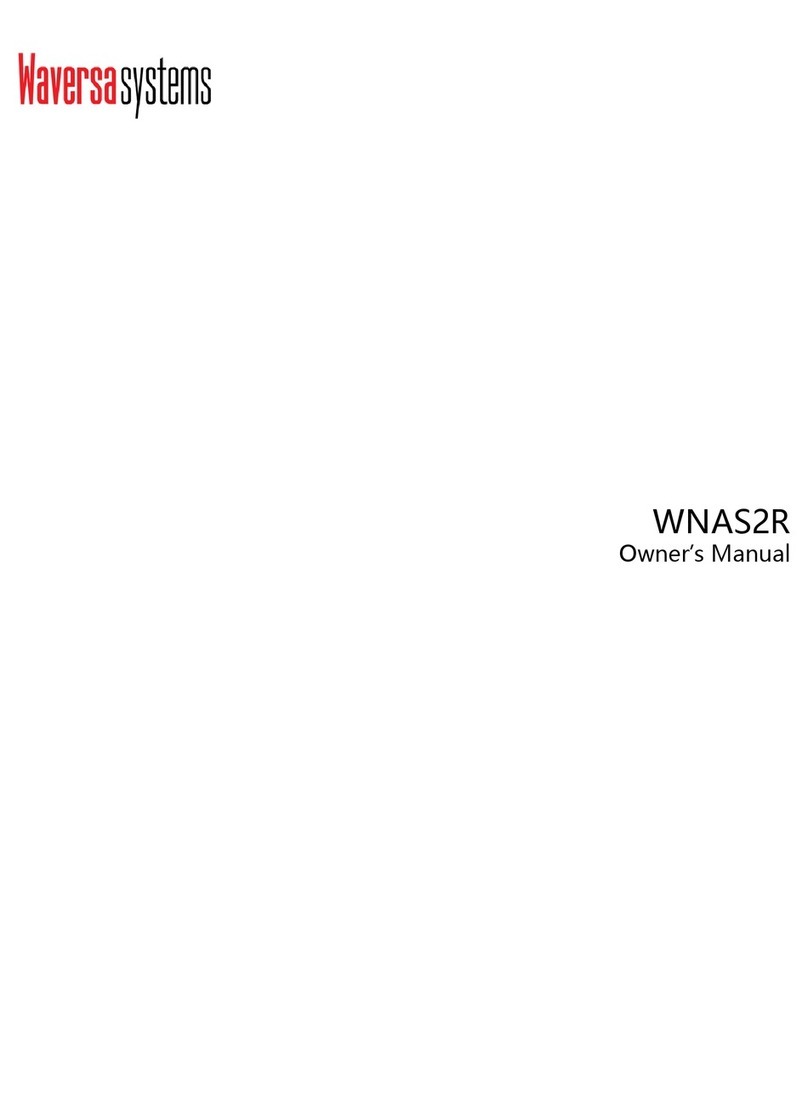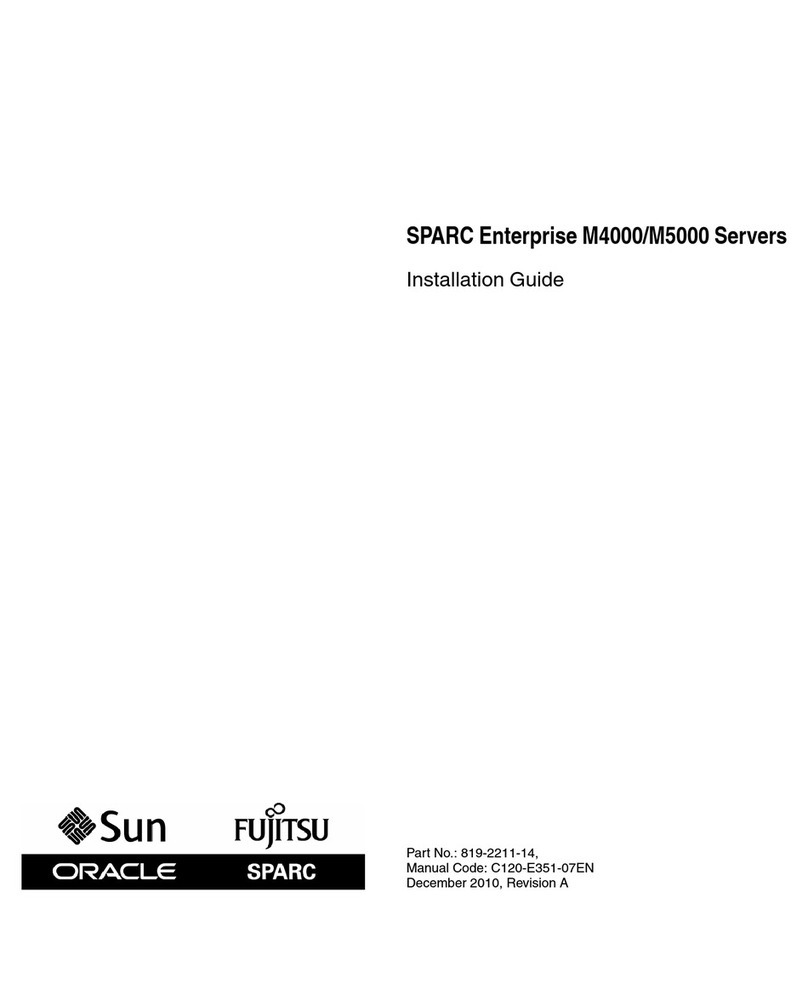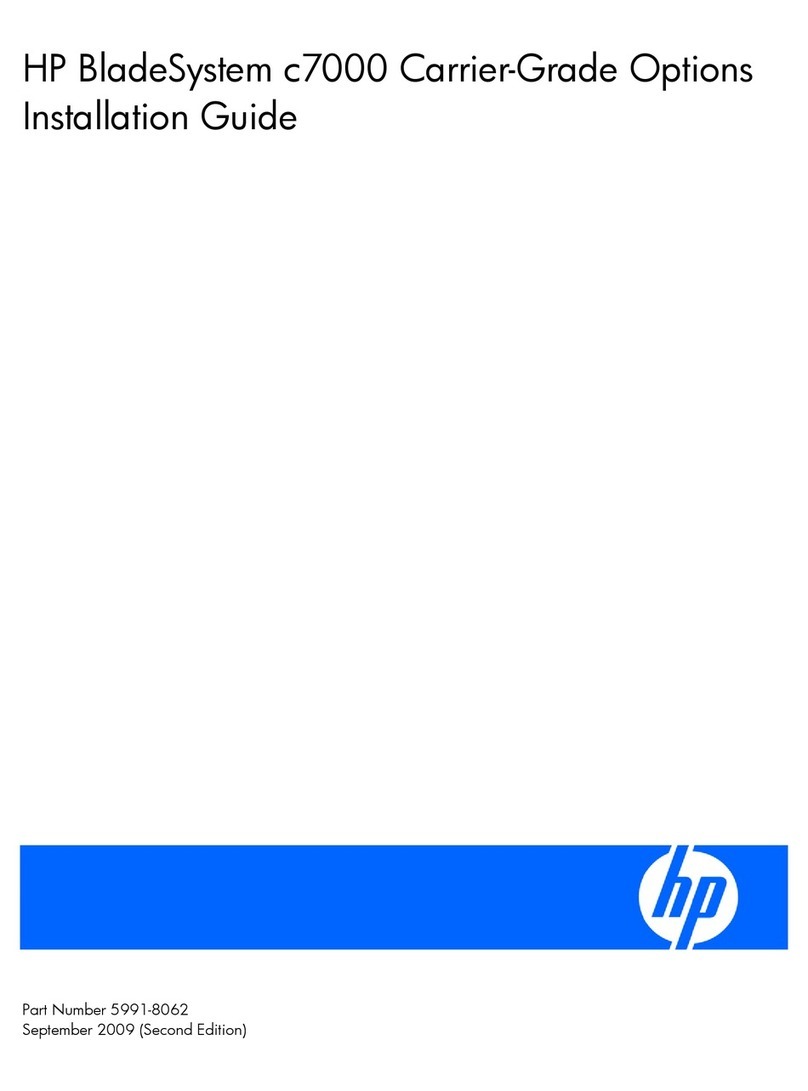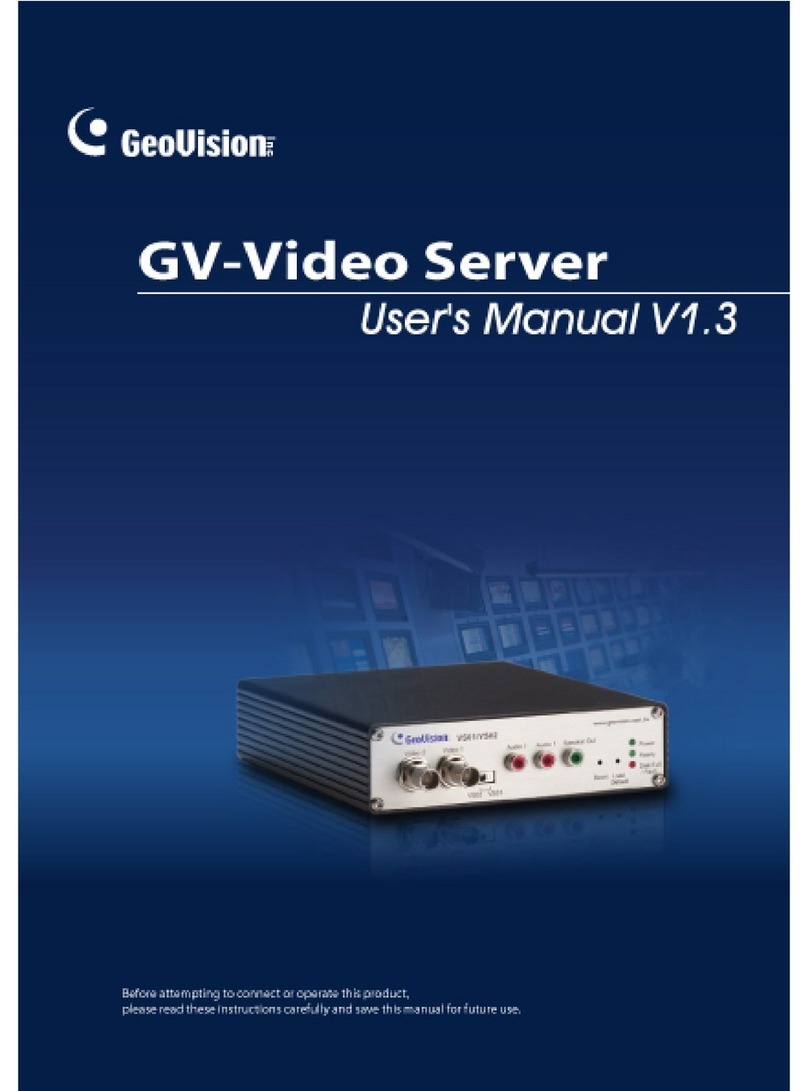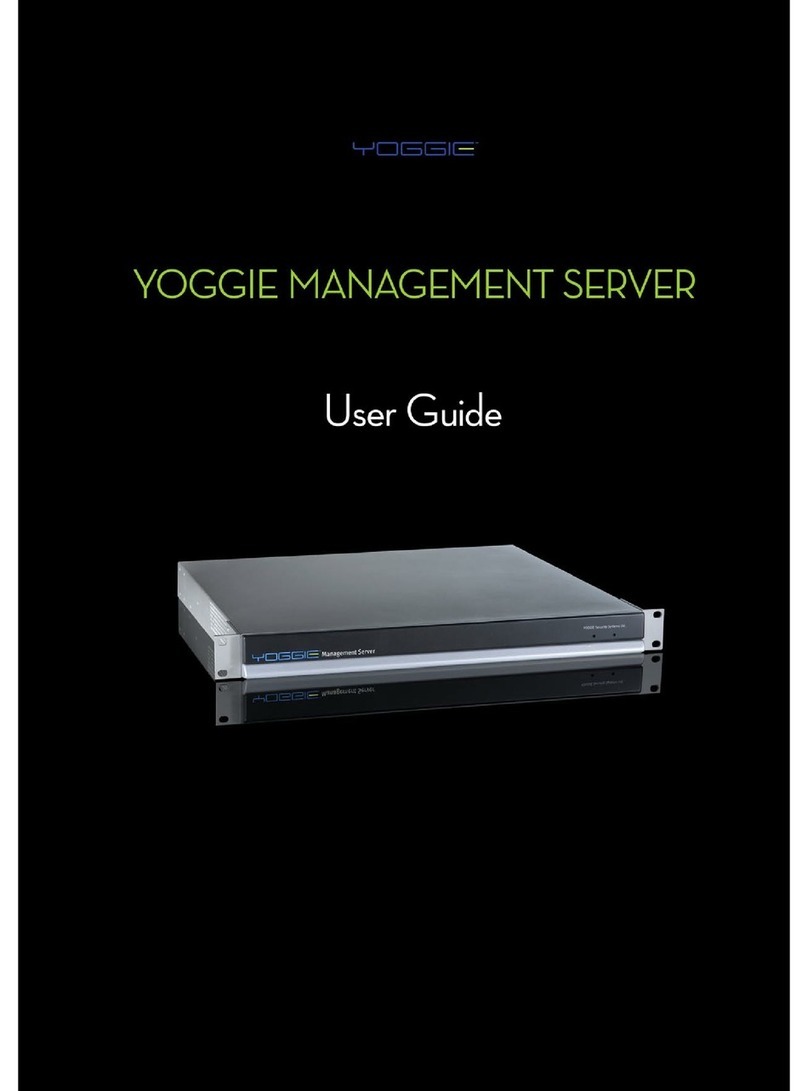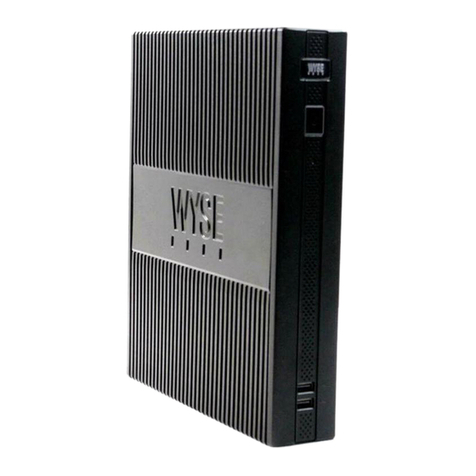Tekelec EAGLE 5 Owner's manual

Tekelec EAGLE® 5
Integrated Signaling System
Release 1.0
Feature Manual - ECAP
910-3191-001 Revision D
June 2007

Copyright 2007 Tekelec
All Rights Reserved
Printed in U.S.A.
Notice
Information in this documentation is subject to change without notice. Unauthorized use or copying of this
documentation can result in civil or criminal penalties.
Any export of Tekelec products is subject to the export controls of the United States and the other countries
where Tekelec has operations.
No part of this documentation may be reproduced or transmitted in any form or by any means,
electronic or mechanical, including photocopying or recording, for any purpose without the
express written permission of an authorized representative of Tekelec.
Other product names used herein are for identification purposes only, and may be trademarks of their
respective companies.
RoHS 5/6 - As of July 1, 2006, all products that comprise new installations shipped to European Union
member countries will comply with the EU Directive 2002/95/EC "RoHS" (Restriction of Hazardous
Substances). The exemption for lead-based solder described in the Annex will be exercised. RoHS 5/6
compliant components will have unique part numbers as reflected in the associated hardware and
installation manuals.
WEEE - All products shipped to European Union member countries comply with the EU Directive
2002/96/EC, Waste Electronic and Electrical Equipment. All components that are WEEE compliant will be
appropriately marked. For more information regarding Tekelec's WEEE program, contact your sales
representative.
Trademarks
The Tekelec logo, EAGLE, G-Flex, G-Port, IP7, IP7Edge, IP7Secure Gateway, and TALI are registered
trademarks of Tekelec, Inc. TekServer is a trademark of Tekelec, Inc. All other trademarks are the property
of their respective owners.
Patents
This product is covered by one or more of the following U.S. and foreign patents:
U.S. Patent Numbers:
5,008,929, 5,953,404, 6,167,129, 6,324,183, 6,327,350, 6,456,845, 6,606,379, 6,639,981, 6,647,113, 6,662,017,
6,735,441, 6,745,041, 6,765,990, 6,795,546, 6,819,932, 6,836,477, 6,839,423, 6,885,872, 6,901,262, 6,914,973,
6,940,866, 6,944,184, 6,954,526, 6,954,794, 6,959,076, 6,965,592, 6,967,956, 6,968,048, 6,970,542
Ordering Information
For additional copies of this document, contact your sales representative.

910-3191-001 Rev D, June 2007 i
Table of Contents
Chapter 1. Introduction
Overview.................................................................................................... 1-2
Scope and Audience ................................................................................. 1-3
Manual Organization ............................................................................... 1-3
Related Documentation............................................................................ 1-3
Documentation Packaging, Delivery, and Updates............................. 1-9
Documentation Admonishments ......................................................... 1-10
Customer Care Center............................................................................ 1-10
Problem Classification..................................................................... 1-11
Response............................................................................................ 1-12
Hardware Repair and Return................................................................ 1-12
Acronyms................................................................................................. 1-12
Chapter 2. Feature Description
Introduction............................................................................................... 2-2
Hardware Requirements.......................................................................... 2-3
Architectural Overview............................................................................ 2-5
Interconnectivity ....................................................................................... 2-6
Integrated Accounting Feed Considerations ........................................ 2-9
Chapter 3. ECAP Configuration
Introduction............................................................................................... 3-2
Configuring the Aggregator.................................................................... 3-2
Configuring ECAP Network Interfaces................................................. 3-3
Configuring File Transfer ........................................................................ 3-7
Configuring NTP....................................................................................... 3-9
Configuring NMS.................................................................................... 3-11
Configuring the Integrated Accounting Feed Application............... 3-15
Configuring SLAN Cards...................................................................... 3-18
Configuring Gateway Screening........................................................... 3-19
Chapter 4. Maintenance
Alarms ........................................................................................................ 4-2
Platform Alarms ................................................................................. 4-2

ii 910-3191-001 Rev D, June 2007
Table of Contents
EAGLE 5 ISS Alarms ......................................................................... 4-6
Integrated Accounting Feed Conditions ........................................ 4-8
Disaster Recovery................................................................................... 4-12
Log Files................................................................................................... 4-13
Savelogs............................................................................................. 4-13
Health Check........................................................................................... 4-14
Process Check................................................................................... 4-14
Crontab Check.................................................................................. 4-14
Disk Space Check............................................................................. 4-15
Network Check................................................................................. 4-15
Appendix A. MSU to XML Field Mapping
Introduction.............................................................................................. A-2
Data Files................................................................................................... A-3
Data File XML DTD.......................................................................... A-6
ISUP MSU................................................................................................. A-7
ECAP XML Output........................................................................... A-8
SCCP MSU................................................................................................ A-9
ECAP XML Output......................................................................... A-10
MAP MSU............................................................................................... A-11
ECAP XML Output......................................................................... A-12
Index

910-3191-001 Rev D, June 2007 iii
List of Figures
Figure 2-1. ECAP T1100 Frame .....................................................................2-4
Figure 2-2. Integrated Accounting Feed Architectural Overview ...........2-5
Figure 2-3. Interconnectivity Overview ......................................................2-7
Figure 2-4. Aggregator/ECAP/EAGLE 5 ISS Connectivity
Diagram ......................................................................................................2-8
Figure 3-1. Network Configuration ............................................................3-3
Figure 3-2. Integrated Accounting Feed Configuration Menu ..............3-15

iv 910-3191-001 Rev D, June 2007
— Preliminary —
List of Tables
Table 1-1. Admonishment icons .....................................................................................1-10
Table 2-1. MSU to Server Mapping ..................................................................................2-3
Table 2-2. Integrated Accounting Feed Architecture Terms ........................................2-6
Table 3-1. ECAP Network Parameters ............................................................................3-6
Table 3-2. Configuration Menu Options .......................................................................3-16
Table 3-3. SLAN Card Parameters .................................................................................3-18
Table 4-1. Critical Platform Alarms .................................................................................4-5
Table 4-2. Major Platform Alarms ....................................................................................4-5
Table 4-3. Minor Platform Alarms ...................................................................................4-6
Table 4-4. EAGLE 5 ISS UAMs .........................................................................................4-7
Table 4-5. Integrated Accounting Feed Conditions .......................................................4-9
Table A-1. Data File Tags .................................................................................................A-3

910-3191-001 Revision D, June 2007 1-1
1
Introduction
Overview ...........................................................................................................1-2
Scope and Audience.........................................................................................1-3
Manual Organization.......................................................................................1-3
Related Documentation...................................................................................1-3
Documentation Packaging, Delivery, and Updates.....................................1-9
Documentation Admonishments.................................................................1-10
Customer Care Center ...................................................................................1-10
Acronyms.........................................................................................................1-12

1-2 910-3191-001 Revision D, June 2007
Introduction
Overview
The Eagle Collection Application Processor (ECAP) is a dedicated standalone
platform for the collection of EAGLE® 5 ISS traffic statistics data. The ECAP
platform is a frame mounted system that includes two or more ECAP servers, a
power distribution breaker panel, and two Ethernet switches. The ECAP server is
a T1100 Application Server (AS) running the Integrated Q.752 MTP/SCCP
Accounting Feed application. The Eagle Collector Application Process collects
raw MSUs from the EAGLE 5 ISS and generates data files that contain structured
counts supporting ITU-T Recommendation Q.752, Section 7. These counts are sent to
another system for accounting activities.
The Integrated Accounting Feed application provides basic MTP and SCCP
accounting and measurements capability on the EAGLE 5 ISS platform in
accordance with ITU-T Recommendation Q.752, Section 7. The concepts discussed in
ITU-T Recommendation Q.752, Section 7 are known as "cascade remuneration" and
"cascade remuneration verification", and are based on the principle that the
originator of a message pays the network operator who owns the next node in the
message's path for accepting the messages and subsequent processing. This
operator then pays the network operator who owns the next node in the
message's path, and so on until the message finally reaches its final destination,
which could be in yet another network.
The ECAP platform is an adjunct system to the Tekelec portfolio of products that
work in conjunction with the EAGLE 5 ISS and other system(s) so that the raw
MSU data can be converted into accounting records in accordance with Section 7.
The ECAP generates periodic traffic data files which are transferred to a
configured Aggregator, allowing detailed usage reports to be compiled across all
monitored links in the system. This system takes the STPLAN feed from EAGLE 5
ISS and collects specific information from each MSU. In general, the information
consists of OPC, DPC, SI, SCCP CdPA, SCCP CgPA, and MAP Opcode. These
values are organized and written to files and "pushed" to an external system for
final analysis.
NOTE: For the purpose of this document, a ‘data file’ is defined as a compiled
file of peg counts and other measurements in XML format.
A single ECAP server can process up to 5000 MSUs per second, providing precise
measurements of MSUs and octets transmitted. See Table 2-1, MSU to Server
Mapping on page 2-3 for adding multiple ECAPs to an EAGLE 5 ISS system to
increase capacity.
The ECAP provides a user interface for configuration and application control and
generates log files for monitoring and maintenance purposes.

Introduction
910-3191-001 Revision D, June 2007 1-3
Scope and Audience
This manual is intended for anyone responsible for installing, maintaining, and
using the Integrated Accounting Feed application in the EAGLE 5 ISS. Users of
this manual and the others in the EAGLE 5 ISS family of documents must have a
working knowledge of telecommunications and network installations.
Manual Organization
This manual is organized into the following chapters:
•Chapter1,Introduction, contains general overview of the ECAP system,
general information about the organization of this manual, the audience,
references to other Tekelec documentation you might need, information on
customer assistance, documentation packaging, delivery, and updates, and a
list of acronyms and abbreviations used in the document.
•Chapter2,Feature Description, provides a functional description of the
Integrated Accounting Feed application and ECAP system, including
overviews of the architecture and connectivity, hardware requirements, and
considerations.
•Chapter3,ECAP Configuration, describes how to configure the components
that comprise the Integrated Accounting Feed application.
•Chapter4,Maintenance, describes maintenance tasks for the Integrated
Accounting Feed application, including alarms, disaster recovery, log files,
and health check procedures.
• Appendix A, MSU to XML Field Mapping, describes how MSU parameters that
come into the ECAP server relate to the peg count fields in the ECAP data file.
Related Documentation
The Feature Manual - ECAP is part of the EAGLE 5 ISS documentation set and
may refer to one or more of the following manuals:
•TheCommands Manual contains procedures for logging into or out of the
EAGLE 5 ISS, a general description of the terminals, printers, the disk
drive used on the system, and a description of all the commands used in
the system.
•TheCommands Pocket Guide is an abridged version of the Commands
Manual. It contains all commands and parameters, and it shows the
command-parameter syntax.
•TheCommands Quick Reference Guide contains an alphabetical listing of the
commands and parameters. The guide is sized to fit a shirt-pocket.

1-4 910-3191-001 Revision D, June 2007
Introduction
•TheCommands Error Recovery Manual contains the procedures to resolve
error message conditions generated by the commands in the Commands
Manual. These error messages are presented in numerical order.
•TheDatabase Administration Manual – Features contains procedural
information required to configure the EAGLE 5 ISS to implement these
features:
—X.25Gateway
—STPLAN
— Database Transport Access
— GSM MAP Screening
— EAGLE 5 Integrated Monitoring Support.
•TheDatabase Administration Manual - Gateway Screening contains a
description of the Gateway Screening (GWS) feature and the procedures
necessary to configure the EAGLE 5 ISS to implement this feature.
•TheDatabase Administration Manual – Global Title Translation contains
procedural information required to configure an EAGLE 5 ISS to
implement these features:
— Global Title Translation
— Enhanced Global Title Translation
— Variable Length Global Title Translation
— Global Title Translation Modification
— Intermediate GTT Load Sharing
— ANSI-ITU-China SCCP Conversion
— Flexible GTT Load Sharing
— Origin-Based SCCP Routing
— Hex Digit Support for GTT
— Weighted GTT Load Sharing
— Transaction-Based GTT Load Sharing.
•TheDatabase Administration Manual - IP7Secure Gateway contains
procedural information required to configure the EAGLE 5 ISS to
implement the SS7-IP Gateway.
•TheDatabase Administration Manual – SEAS contains the EAGLE 5 ISS
configuration procedures that can be performed from the Signaling
Engineering and Administration Center (SEAC) or a Signaling Network
Control Center (SNCC). Each procedure includes a brief description of the

Introduction
910-3191-001 Revision D, June 2007 1-5
procedure, a flowchart showing the steps required, a list of any EAGLE 5
ISS commands that may be required for the procedure but that are not
supported by SEAS, and a reference to optional procedure-related
information, which can be found in one of these manuals:
—Database Administration Manual – Gateway Screening
—Database Administration Manual – Global Title Translation
—Database Administration Manual – SS7.
•TheDatabase Administration Manual – SS7 contains procedural information
required to configure an EAGLE 5 ISS to implement the SS7 protocol.
•TheDatabase Administration Manual – System Management contains
procedural information required to manage the EAGLE 5 ISS database and
GPLs, and to configure basic system requirements such as user names and
passwords, system-wide security requirements, and terminal
configurations.
•TheDimensioning Guide for EPAP Advanced DB Features is used to provide
EPAP planning and dimensioning information. This manual is used by
Tekelec personnel and EAGLE 5 ISS customers to aid in the sale, planning,
implementation, deployment, and upgrade of EAGLE 5 ISS systems
equipped with one of the EAGLE 5 ISS EPAP Advanced Database (EADB)
Features.
•TheELAP Administration Manual defines the user interface to the EAGLE 5
ISS LNP Application Processor on the MPS/ELAP platform. The manual
defines the methods for accessing the user interface, menus, screens
available to the user and describes their impact. It provides the syntax and
semantics of user input and defines the output the user receives, including
information and error messages, alarms, and status.
•TheEPAP Administration Manual describes how to administer the EAGLE
5 ISS Provisioning Application Processor on the MPS/EPAP platform. The
manual defines the methods for accessing the user interface, menus, and
screens available to the user and describes their impact. It provides the
syntax and semantics of user input and defines the output the user
receives, including messages, alarms, and status.
•TheFeature Manual - A-Port provides an overview of a feature providing
the capability for IS41 mobile subscribers to change service provider while
retaining their original Mobile Directory Number (MDN). This manual
gives the instructions and information on how to install, use, and maintain
the A-Port feature on the Multi-Purpose Server (MPS) platform of the
EAGLE 5 ISS.

1-6 910-3191-001 Revision D, June 2007
Introduction
•TheFeature Manual - ECAP provides instructions and information on how
to install, use, and maintain the Integrated Accounting Feature
Application feature on the Eagle Collector Application Processor (ECAP).
This feature collects raw MSU data from the EAGLE 5 ISS, categorizes the
data into groups, and feeds those groups to another system for accounting
activities. Additional features will be added to this manual at a later date.
•TheFeature Manual - EIR provides instructions and information on how to
install, use, and maintain the EIR feature on the Multi-Purpose Server
(MPS) platform of the EAGLE 5 ISS. The feature provides network
operators with the capability to prevent stolen or disallowed GSM mobile
handsets from accessing the network.
•TheFeature Manual - G-Flex C7 Relay provides an overview of a feature
supporting the efficient management of Home Location Registers in
various networks. This manual gives the instructions and information on
how to install, use, and maintain the G-Flex feature on the Multi-Purpose
Server (MPS) platform of the EAGLE 5 ISS.
•TheFeature Manual - G-Port provides an overview of a feature providing
the capability for mobile subscribers to change the GSM subscription
network within a portability cluster while retaining their original
MSISDNs. This manual gives the instructions and information on how to
install, use, and maintain the G-Port feature on the Multi-Purpose Server
(MPS) platform of the EAGLE 5 ISS.
•TheFeature Manual - INP/AINPQ provides the user with information and
instructions on how to implement, utilize, and maintain either the
INAP-based Number Portability (INP) feature or the ANSI-41 INP Query
(AINPQ) feature or both features on the Multi-Purpose Server (MPS)
platform of the EAGLE 5 ISS.
•TheFeature Manual - Migration provides an overview of a feature
providing the capability for IS41 subscribers to migrate to a GSM network
and GSM mobile subscribers to migrate to an IS41 network. This manual
gives the instructions and information on how to install, use, and maintain
the Migration feature on the Multi-Purpose Server (MPS) platform of the
EAGLE 5 ISS.
•TheFTP-Based Table Retrieve Application (FTRA) User Guide describes how
to set up and use a PC to serve as the offline application for the EAGLE 5
ISS FTP Retrieve and Replace feature.
•TheHardware Manual - EAGLE 5 ISS provides an overview of each system
and its subsystems, details of standard and optional hardware
components in each system, and basic site engineering. These include the
EAGLE 5 ISS, OEM-based products such as the ASi 4000 Service Control
Point (SCP), and the Netra-based Multi-Purpose Server (MPS).

Introduction
910-3191-001 Revision D, June 2007 1-7
•TheHardware Manual - Tekelec 1000 Application Server provides general
specifications and a description of the Tekelec 1000 Application Server
(T1000 AS). This manualalso includes site preparation, environmental and
other requirements, procedures to physically install the T1000 AS, and
troubleshooting and repair of Field Replaceable Units (FRUs).
•TheHardware Manual - Tekelec 1100 Application Server provides general
specifications and a description of the Tekelec 1100 Application Server
(T1100 AS). This manual also includes site preparation, environmental and
other requirements, procedures to physically install the T1100 AS, and
troubleshooting and repair of Field Replaceable Units (FRUs).
•TheInstallation Manual - EAGLE 5 ISS contains cabling requirements,
schematics, and procedures for installing the EAGLE 5 ISS along with
LEDs, connectors, cables, and power cords to peripherals. Refer to this
manual to install components or the complete systems.
•TheLNP Database Synchronization Manual - LSMS with EAGLE 5 ISS
describes how to keep the LNP databases at the LSMS and at the network
element (the EAGLE 5 ISS is a network element) synchronized through the
use of resynchronization, audits and reconciles, and bulk loads. This
manual is contained in both the LSMS documentation set and in the
EAGLE 5 ISS documentation set.
•TheLNP Feature Activation Guide contains procedural information
required to configure the EAGLE 5 ISS for the LNP feature and to
implement these parts of the LNP feature on the EAGLE 5 ISS:
—LNPservices
— LNP options
— LNP subsystem application
— Automatic call gapping
—TriggerlessLNPfeature
— Increasing the LRN and NPANXX Quantities on the EAGLE 5 ISS
— Activating and Deactivating the LNP Short Message Service (SMS)
feature.
•TheMaintenance Manual contains procedural information required for
maintaining the EAGLE 5 ISS and the card removal and replacement
procedures. The Maintenance Manual provides preventive and corrective
maintenance procedures used in maintaining the different systems.
•TheMaintenance Pocket Guide is an abridged version of the Maintenance
Manual and contains all the corrective maintenance procedures used in
maintaining the EAGLE 5 ISS.

1-8 910-3191-001 Revision D, June 2007
Introduction
•TheMaintenance Emergency Recovery Pocket Guide is an abridged version of
the Maintenance Manual and contains the corrective maintenance
procedures for critical and major alarms generated on the EAGLE 5 ISS.
•TheMPS Platform Software and Maintenance Manual - EAGLE 5 ISS with
Tekelec 1000 Application Server describes the platform software for the
Multi-Purpose Server (MPS) based on the Tekelec 1000 Application Server
(T1000 AS) and describes how to perform preventive and corrective
maintenance for the T1000 AS-based MPS. This manual should be used
with the EPAP-based applications (EIR, G-Port, G-Flex, A-Port, Migration,
AINPQ, and INP).
•TheMPS Platform Software and Maintenance Manual - EAGLE 5 ISS with
Tekelec 1100 Application Server describes the platform software for the
Multi-Purpose Server (MPS) based on the Tekelec 1100 Application Server
(T1100 AS) and describes how to perform preventive and corrective
maintenance for the T1100 AS-based MPS. This manual should be used
with the ELAP-based application (LNP).
•TheProvisioning Database Interface Manual defines the programming
interface that populates the Provisioning Database (PDB) for the EAGLE 5
ISS features supported on the MPS/EPAP platform. The manual defines
the provisioning messages, usage rules, and informational and error
messages of the interface. The customer uses the PDBI interface
information to write his own client application to communicate with the
MPS/EPAP platform.
•ThePreviously Released Features Manual summarizes the features of
previous EAGLE, EAGLE 5 ISS, and IP7Secure Gateway releases, and it
identifies the release number of their introduction.
•TheRelease Documentation contains the following documents for a specific
release of the system:
—Feature Notice - Describes the features contained in the specified
release. The Feature Notice also provides the hardware baseline for the
specified release, describes the customer documentation set, provides
information about customer training, and explains how to access the
Customer Support website.
—Release Notice - Describes the changes made to the system during the
lifecycle of a release. The Release Notice includes Generic Program
Loads (GPLs), a list of PRs resolved in a build, and all known PRs.
NOTE: The Release Notice is maintained solely on Tekelec’s
Customer Support site to provide you with instant accessto the most
up-to-date release information.
—Systems Overview - Provides high-level information on SS7, the IP7
Secure Gateway, system architecture, LNP, and EOAP.

Introduction
910-3191-001 Revision D, June 2007 1-9
—Master Glossary - Contains an alphabetical listing of terms, acronyms,
and abbreviations relevant to the system.
—Master Index - Lists all index entries used throughout the
documentation set.
•TheSEAS Commands Error Messages Manual lists the error messages
generated by the EAGLE 5 ISS that are specific to the Signaling
Engineering and Administration System (SEAS). It includes the SEAS
commands that trigger the error messages, the equivalent system error
messages and commands, and the explanatory text.
•TheSS7-over-IP Networks Using SIGTRAN manual examines the reasons
for transitioning to an SS7-over-IP network, the considerations that go into
planning and dimensioning, and helpful information for implementing
the network using EAGLE 5 ISS.
•TheSystem Manual – EOAP describes the Embedded Operations Support
System Application Processor (EOAP) and provides the user with
procedures on how to implement the EOAP, replace EOAP-related
hardware, device testing, and basic troubleshooting information.
Documentation Packaging, Delivery, and Updates
Customer documentation is provided with each system in accordance with the
contract agreements. It is updated whenever significant changes that affect
system operation or configuration are made. Updates may be issued as an
addendum, or a reissue of the affected documentation.
The document part number appears on the title page along with the current
revision of the document, the date of publication, and the software release that the
document covers. The bottom of each page contains the document part number
and date of publication.
Two types of releases are major software releases and maintenance releases.
Maintenance releases are issued as addenda with a title page and change bars. On
the changed pages, the date and document part number are changed. On any
unchanged pages that accompany the changed pages, the date and document part
number is unchanged.
When the software release has a minimum effect on documentation, we provide
an addendum. The addendum provides an instruction page, a new title page, a
change history page, and replacement chapters with the date of publication, the
document part number, and change bars.
If a new release has a major impact on documentation, such as a new feature, the
entire documentation set is reissued with a new part number and a new release
number.

1-10 910-3191-001 Revision D, June 2007
Introduction
Documentation Admonishments
Admonishments are icons and text throughout this manual that alert the reader to
assure personal safety, to minimize possible service interruptions, and to warn of
the potential for equipment damage. This manual has three admonishments,
listed in descending order of priority as shown in Table 1-1, Admonishment icons.
Customer Care Center
The Customer Care Center offers a point of contact through which customers can
receive support for problems that may be encountered during the use of Tekelec’s
products. The Customer Care Center is staffed with highly trained engineers to
provide solutions to your technical questions and issues seven days a week,
twenty-four hours a day. A variety of service programs are available through the
Customer Care Center to maximize the performance of Tekelec products that
meet and exceed customer’s needs.
To receive technical assistance, call the Customer Care Center at one of the
following locations:
• Tekelec, UK
Phone +44 1784 467 804
Fax +44 1784 477 120
E-mail ecsc@tekelec.com
• Tekelec, USA
Phone (within the continental US) 888-367-8552 (888-FOR-TKLC)
(outside the continental US) +1 919-460-2150
Fax 919-460-0877
E-mail suppo[email protected]
Table 1-1. Admonishment icons
Icon Description
DANGER:
This icon and text indicate the possibility of personal injury.
WARNING:
This icon and text indicate the possibility of equipment damage.
CAUTION:
This icon and text indicate the possibility of service interruption.

Introduction
910-3191-001 Revision D, June 2007 1-11
Problem Classification
Once a Customer Service Request (CSR) is issued, the Customer Care Center,
along with the customer, determines the classification of the trouble.
Problems are reported using problem criteria, as defined in the following sections
and “TL-9000 Quality System Metrics (Book Two, Release 3.0)” .
Problem – Critical
Critical problems severely affect service, capacity/traffic, billing, and
maintenance capabilities and requires immediate corrective action, regardless of
time of day or day of the week, as viewed by a customer upon discussion with the
supplier. For example:
• A loss of service that is comparable to the total loss of effective functional
capacity of an entire switching or transport system.
• A reduction in capacity or traffic handling capacity such that expected
loads cannot be handled.
• A loss of ability to provide safety or emergency capability (for example,
911 calls).
Problem – Major
Major problems cause conditions that seriously affect system operations, or
maintenance and administration, and require immediate attention as viewed by
the customer upon discussion with the supplier. Because of a lesser immediate or
impending effect on system performance, the urgency is less than in a critical
situation. A list of possible examples follows:
• Reduction in any capacity/traffic measurement function
• Any loss of functional visibility and/or diagnostic capability
• Short outage equivalent to system or subsystem outages with
accumulated duration of greater than two minutes in any 24-hour period
or that continue to repeat during longer periods
• Repeated degradation of DS1 or higher rate spans or connections
• Prevention of access for routine administrative activity
• Degradation of access for maintenance or recovery operations
• Degradation of the system’s ability to provide any required critical or
major trouble notification
• Any significant increase in product-related customer trouble reports
• Billing error rates that exceed specifications
• Corruption of system or billing databases

1-12 910-3191-001 Revision D, June 2007
Introduction
Problem – Minor
Other problems that a customer does not view as critical or major are considered
minor. Minor problems do not significantly impair the functioning of the system
and do not significantly affect service to customers. These problems are tolerable
during system use.
Engineering complaints are classified as minor unless otherwise negotiated
between the customer and supplier.
Response
If a critical problem exists, emergency response is offered by calling the Customer
Care Center 24 hours a day, 7 days a week.
If the problem is not critical, information regarding the serial number of the
system, Common Language Location Identifier (CLLI), and initial problem
symptoms and messages is recorded and a primary Customer Care Center
specialist is assigned to work the Customer Service Request (CSR) and provide a
solution to the problem. The CSR is closed when the problem has been resolved.
Hardware Repair and Return
Any system components being returned for repair or replacement must be
processed through the Tekelec Return Material Authorization (RMA) procedures.
A hardware repair is defined as an item returned to Tekelec due to a failure, with
the returned item being repaired and returned to the customer. It is essential that
serial numbers are recorded correctly. RMAs cannot be created without a valid
serial number. All repair and quality information is tracked by serial number.
Acronyms
AS Application Server
CdPA Called Party Address
CgPA Calling Party Address
DPC Destination Point Code
DTD Document Type Definition
ECAP Eagle Collector Application Processor
FTP File Transfer Protocol
FTR File Transfer Region
IP Internet Protocol
IPSM Internet Protocol Services Module

Introduction
910-3191-001 Revision D, June 2007 1-13
IS-41 International Standard 41, same as ANSI-41
ISUP ISDN User Part
ITU International Telecommunications Union
MAP Mobile Application Part
MIB Management Information Base
MSU Message Signaling Unit
MTP Message Transfer Part
NMS Network Management System
NTP Network Time Protocol
OAM Operation, Administration, and Maintenance
OPC Origination Point Code
SCCP Signalling Connection Control Part
SCMG SCCP Management
SCP Service Control Point
SLAN STPLAN
SI Service Indicator
SSEDCM Single Slot Enhanced Database Communication Module
SSH Secure Shell
SNMP Simple Network Management Protocol
SP Switching Point
STPLAN Signalling Transfer Point Local Area Network
VSCCP VxWorks Signaling Connection Control Part
VXWSLAN VXWorks SLAN Card
XML Extensible Markup Language
XML DTD Extensible Markup Language Document Type Definition

1-14 910-3191-001 Revision D, June 2007
Introduction
Other manuals for EAGLE 5
12
Table of contents
Other Tekelec Server manuals

